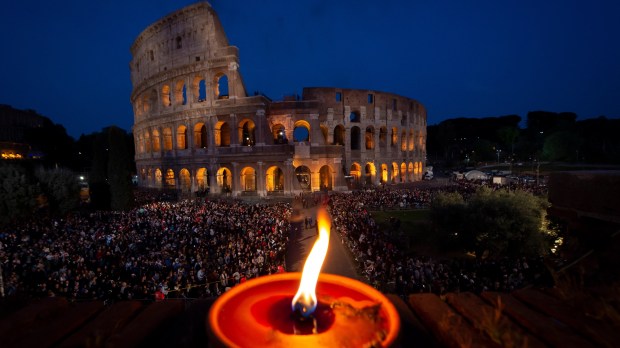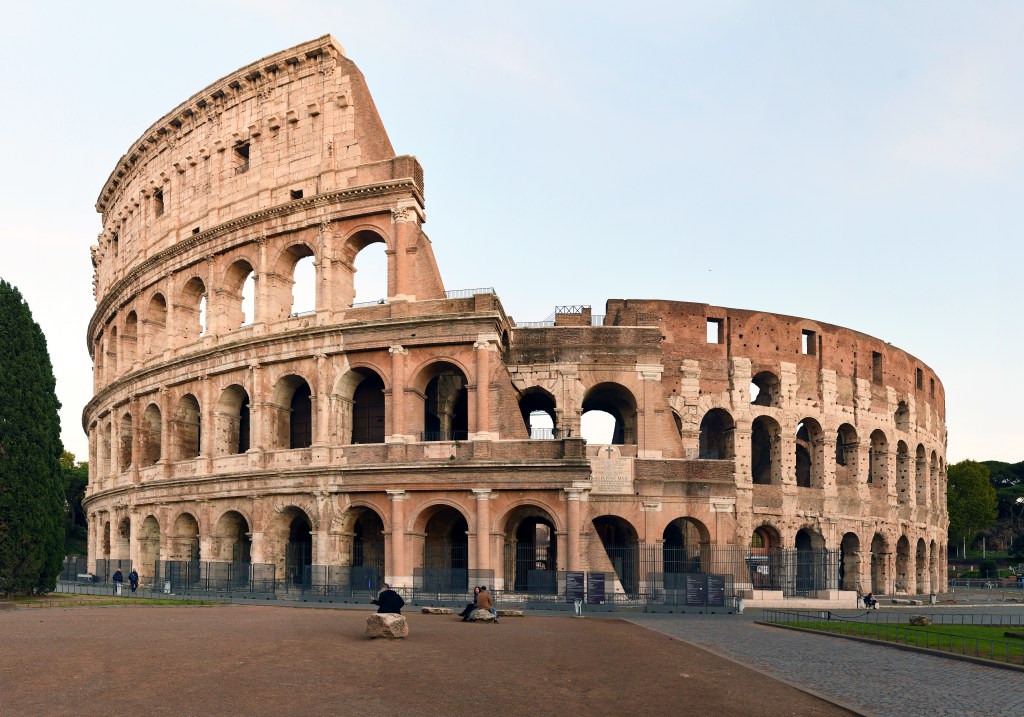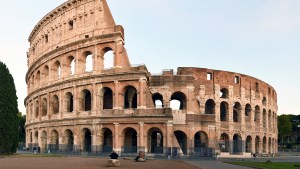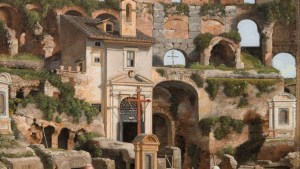As the Church around the world commemorates the passion and death of Jesus, every Good Friday the Colosseum is transformed into a giant stage for the Via Crucis (the Stations, or Way of the Cross), and the slopes of the Esquiline Hill, for an hour, embody those of Golgotha.
At nightfall, the ruins of the famous oval-shaped amphitheater are adorned with a play of light and shadow. Thousands of faithful come to join their prayers to those of the pope in an atmosphere of intense contemplation, around the cross of Christ.
The Colosseum
The Colosseum, in the heart of Rome’s historic center, has long been considered the site of the first Christian martyrs in ancient Rome. Although archaeological research has since shown that the amphitheater was more the site of the Roman Empire’s famous gladiatorial combats than of executions, its reputation has remained associated with the blood of Christians.
It was because of this symbolism that Pope Benedict XIV chose the monument as the scene for the greatest Stations of the Cross of the 18th century, at a time when this tradition was beginning to spread throughout Europe. In 1750, the Italian pontiff had 14 Stations and a large cross erected in the center of the Flavian amphitheater.
On September 19, 1756, the same pope dedicated the Colosseum to the memory of the Passion of Christ and the martyrs. The tradition lasted for over a century, before falling into disuse with the unification of Italy (1861) and the end of the Church’s temporal power, the pontiff having lost his sovereignty over Roman territory.
Then, during Holy Week in 1959, John XXIII once again presided over the Via crucis at the Colosseum. However, it was not until his successor, Paul VI, that this tradition was revived in a lasting way in 1964. It was also under his pontificate that the celebration was broadcast for the first time on live international television and in color, in 1977.
Via crucis with painful relevance
Since then, with rare exceptions such as during the Covid pandemic, pontiffs have taken up the torch. Every year, the man in white steps to a podium overlooking the Colosseum, to follow the route of the cross carried by groups of faithful, while the great silence of the gathered crowd muffles the distant rumor of traffic in the Eternal City.
Some of the Colosseum’s Stations of the Cross have been particularly memorable, such as John Paul II‘s last one in 2005. The Polish pontiff, who was near the end of his life, followed the celebration from the Apostolic Palace. He entrusted Cardinal Joseph Ratzinger — then Prefect of the Congregation for the Doctrine of the Faith — with the meditations.
The text by the man who was to become Benedict XVI denounced, in barely concealed terms, the abuses committed by priests, the scandal of which was beginning to erupt.
“How much filth there is in the Church, and even among those who, in the priesthood, ought to belong entirely to him!” the prefect lamented in words that have gone down in history.
Meditations by diverse authors
During his long pontificate, John Paul II entrusted the meditations to many different people. They included personalities from the world of culture, journalists, women including the Swiss nun Minke de Vries from the Protestant community of Grandchamp, and the Orthodox Patriarch Bartholomew I.
Under the pontificate of Francis, a controversy marked the Way of the Cross for the year 2022. Two months after the Russian invasion of Ukraine, the Argentine pontiff had asked a Russian and a Ukrainian woman to write the 13th Station, but this initiative — which seemed to place an aggressor and an aggressed country on the same level — provoked an outcry.
In the end, the two women carried the cross together, and the text of the meditation was replaced by a moment of silence for world peace. “In the face of death, silence is more eloquent than words,” was the simple echo heard over the arena’s loudspeakers.




